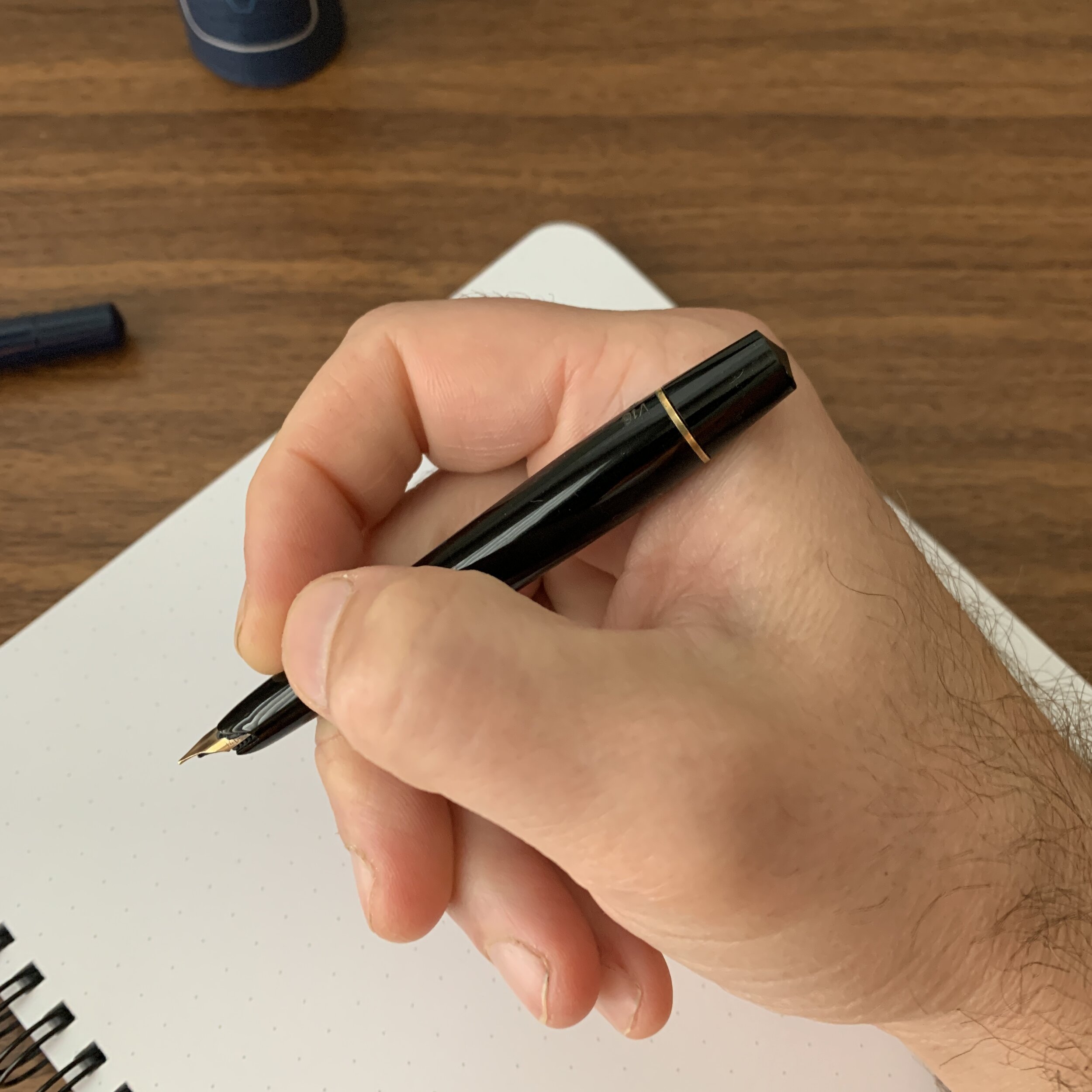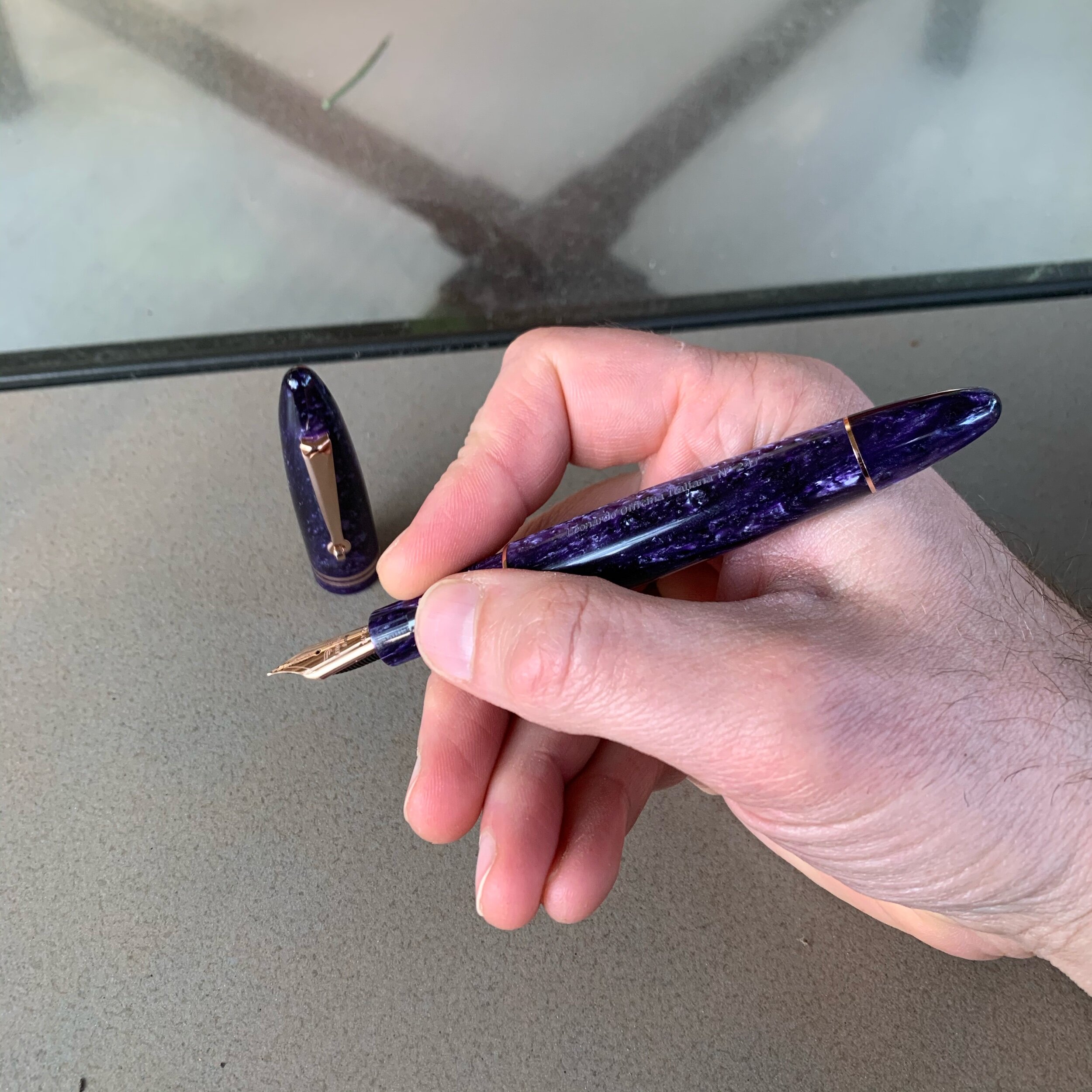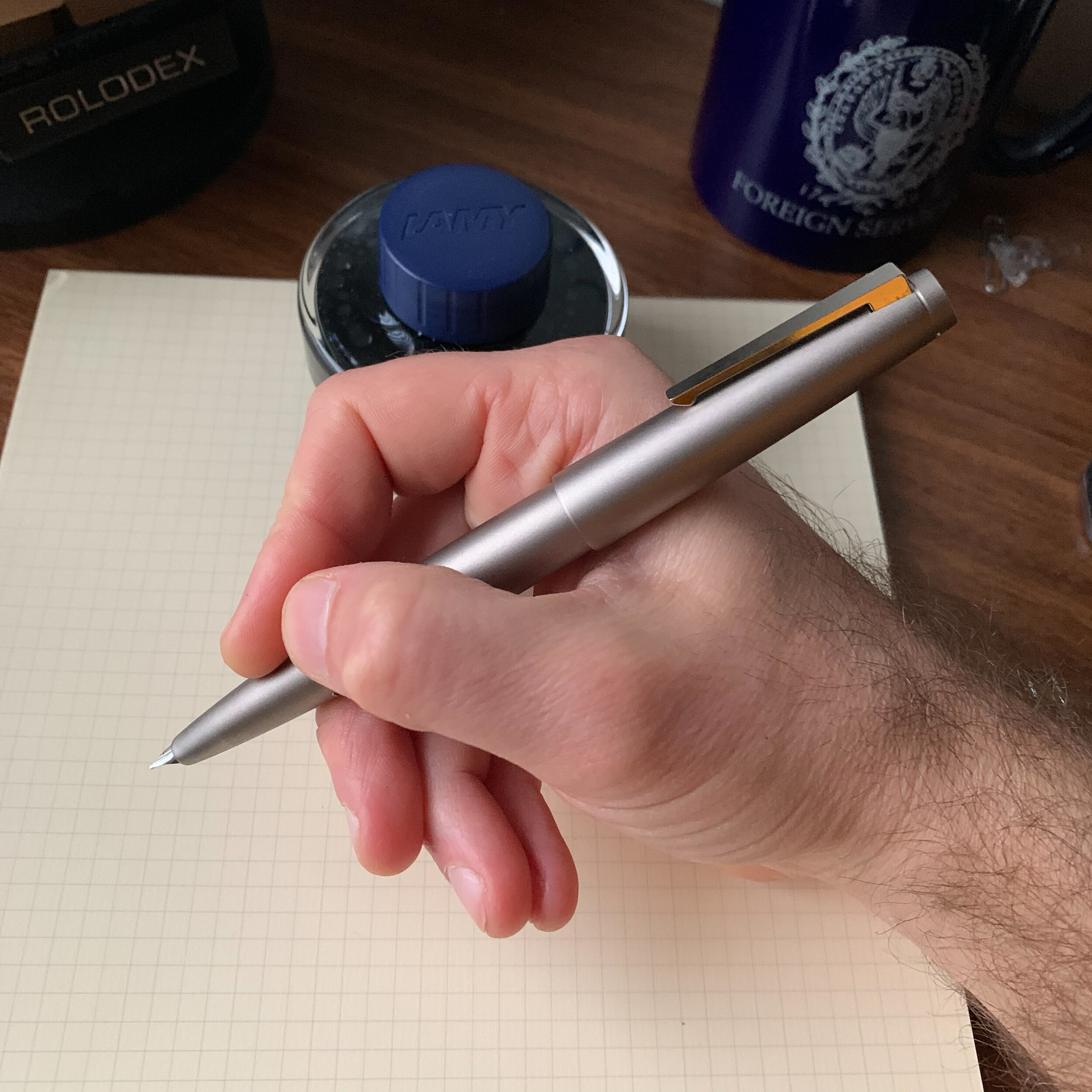I've dabbled in vintage pens over the years, but always as a user, and never really as a collector. It's not that I dislike vintage - on the contrary, I love old things, especially practical items that have survived a century or more of heavy use and remain in nearly as good of shape as they were the day they were made. It's more that by the time I arrived in this hobby, I was struck by a feeling that I was too late to comfortably “collect” within my means. Antique store dealers, flea market vendors, and eBay Sellers had all gotten wind of the resurgent interest in fountain pens and prices seemingly went through the roof, even on pens in so-so condition that needed restoration. While I'm always game to start from scratch and learn about a new hobby, including restoring old pens myself, I didn't have much interest in perfecting my skills at $50-150 a pop. While I’ve learned to do basic repairs like changing sacs and Vacumatic diaphragms, that's the limit of my competence, and I would never feel confident enough to work on pen of any significant value.
So, my experience in vintage largely has been limited to purchasing already restored, nicer pieces that are ready for writing, as opposed to the more "completist" approach to collecting that you might see at pen shows. While I mostly own modern pens, I have a few vintage examples, including a couple of Parker Vacumatics, Pilot Myus, some late-model (1980s-1990s) Watermans and Sheaffers, and now my most recent addition, a vintage Kaweco Sport.
As you can see from the inscription, this is a Kaweco Sport model “V16,” with a “Fine” nib. The facets on this version are more subtle, more akin to the Art Sport than the standard model.
Kaweco Sport: Vintage vs. Modern
Before we dive into a comparison of the vintage Kaweco Sport and the modern pen that you can still purchase today under that name, some brief background on the company itself may be helpful. The original Kaweco (a contraction of Koch, Weber & Co) operated from the late 1800s until the early 1970s, and manufactured several models of pens in addition to the Sport, including the Special, the Elite, and the Dia, all of which you may recognize since the modern company, resurrected in 1994, has released pens under those names. Kaweco actually made multiple versions of the Sport over the years, and the version I own is the last version made in the early 1970s before the original company went out of business. It's part of a commemorative fountain pen and ballpoint set made for the 1972 Munich Olympics, complete with a leather case and medallion.
The modern Kaweco Sport is generally a larger pen than the vintage model that I own. It's longer and more substantial, and from what I can tell based on studying the pictures in Andy Lambrou's Fountain Pens of the World, was based on a 1930s version of the Sport with more pronounced facets on the cap. The vintage Sport feels quite small in comparison, though when extended and posted for writing it's actually a touch longer than the modern Sport.
What else is different? While the modern Kaweco Sport has developed a well-deserved reputation as an inexpensive pocket pen with a steel nib perfect for both beginning fountain pen enthusiasts and experienced users, the vintage Sport featured a 14k gold nib and a piston filling system. The weight of the vintage pen shocked me a bit - despite the integrated piston, it's only slightly heavier than the modern pen. I really wish Kaweco would reissue this classic design, even though the cost of the piston (and the gold nib, if they decided to go that route) would likely require a significant price increase, which I suspect is the main reason it hasn't happened yet.
The nib on this vintage Kaweco Sport writes well, and leaves a moderately wet line, though I’d call it more of a fine-medium than a true fine. Check out that ink window!
I love how Kaweco retained the same script on its modern Sport series. The ballpoint has aged better than the fountain pen, probably due to the fountain pen seeing heavier use.
The finial/medallion on top of the pen is another vintage design element that Kaweco retained on the modern Sport.
Final Thoughts and Where to Buy
I love this little pen. Despite being nearly 50 years old, it feels as sturdy and well-made as a modern Kaweco, though I likely won't tempt fate by using it for true pocket carry. And while I have no plans to dive back into vintage pen collecting, it's tempting to pick up a few more examples of vintage Kawecos, especially if the pens remain as functional as this one. The Munich Olympics connection also makes for a cool piece of history to own.
I purchased this vintage Kaweco pen set from Maria, who sells through her Etsy store MaryMagicBox, which I discovered thanks to a tip from a member of our local Nashville-area pen group. Maria stocks a wide range of restored vintage pens, along with some gently used modern pens, with a focus on German brands such as Montblanc, Pelikan, and Kaweco, along with other lesser known marks including Osmia (later acquired by Faber-Castell). Though vintage Kaweco Sports are less common, they do come up from time to time in Maria’s shop, and she has other models of Kaweco pens available for purchase. If I do get the itch to acquire more vintage, I wouldn’t hesitate to order from Maria again.
Disclaimer: This post contains Etsy affiliate links.
Though this particular refill still works, could someone do me a solid and let me know whether you can still purchase these today? Or maybe hacking another refill (D1?) to get it to work in a vintage Sport ballpoint?












